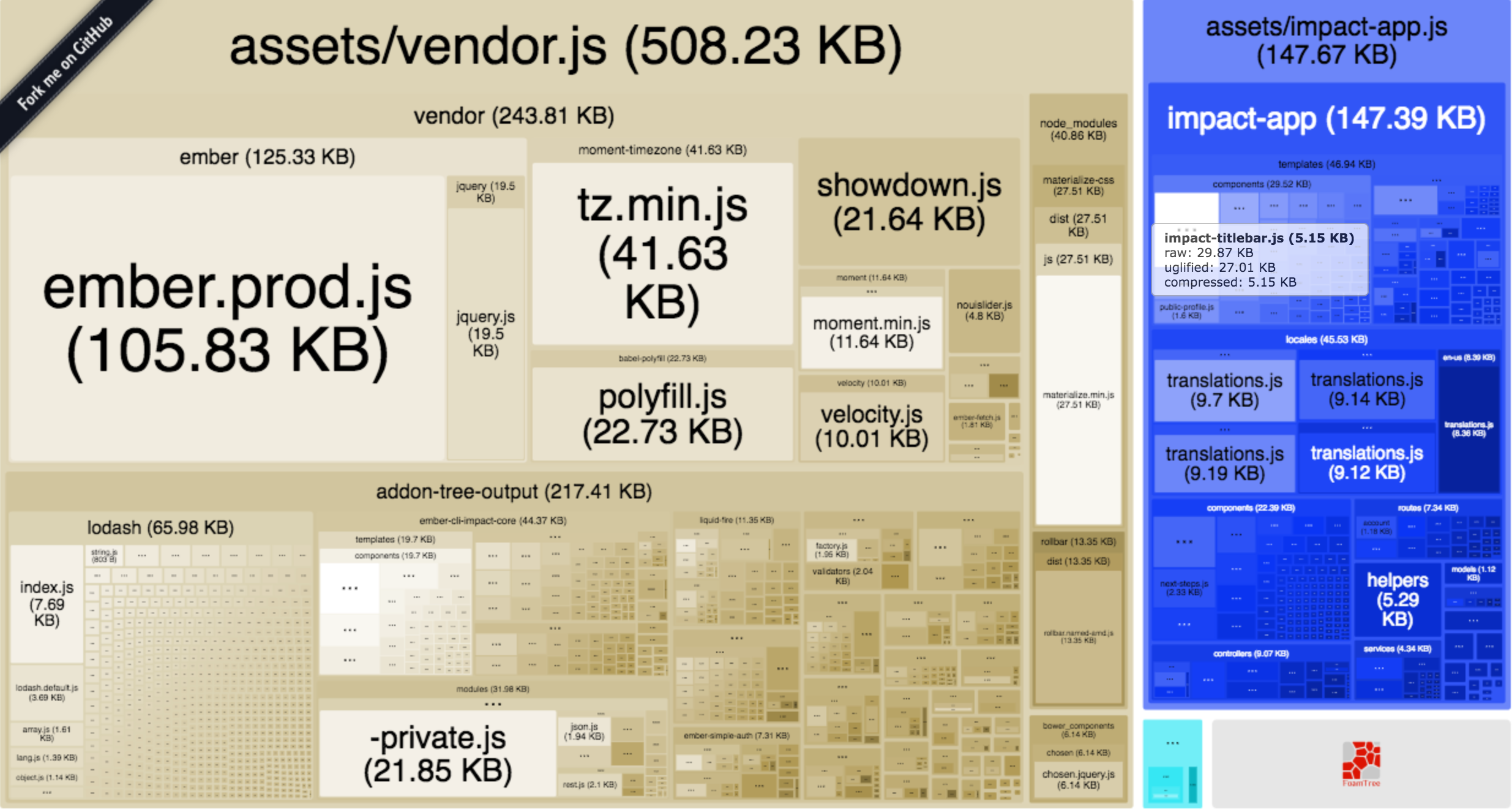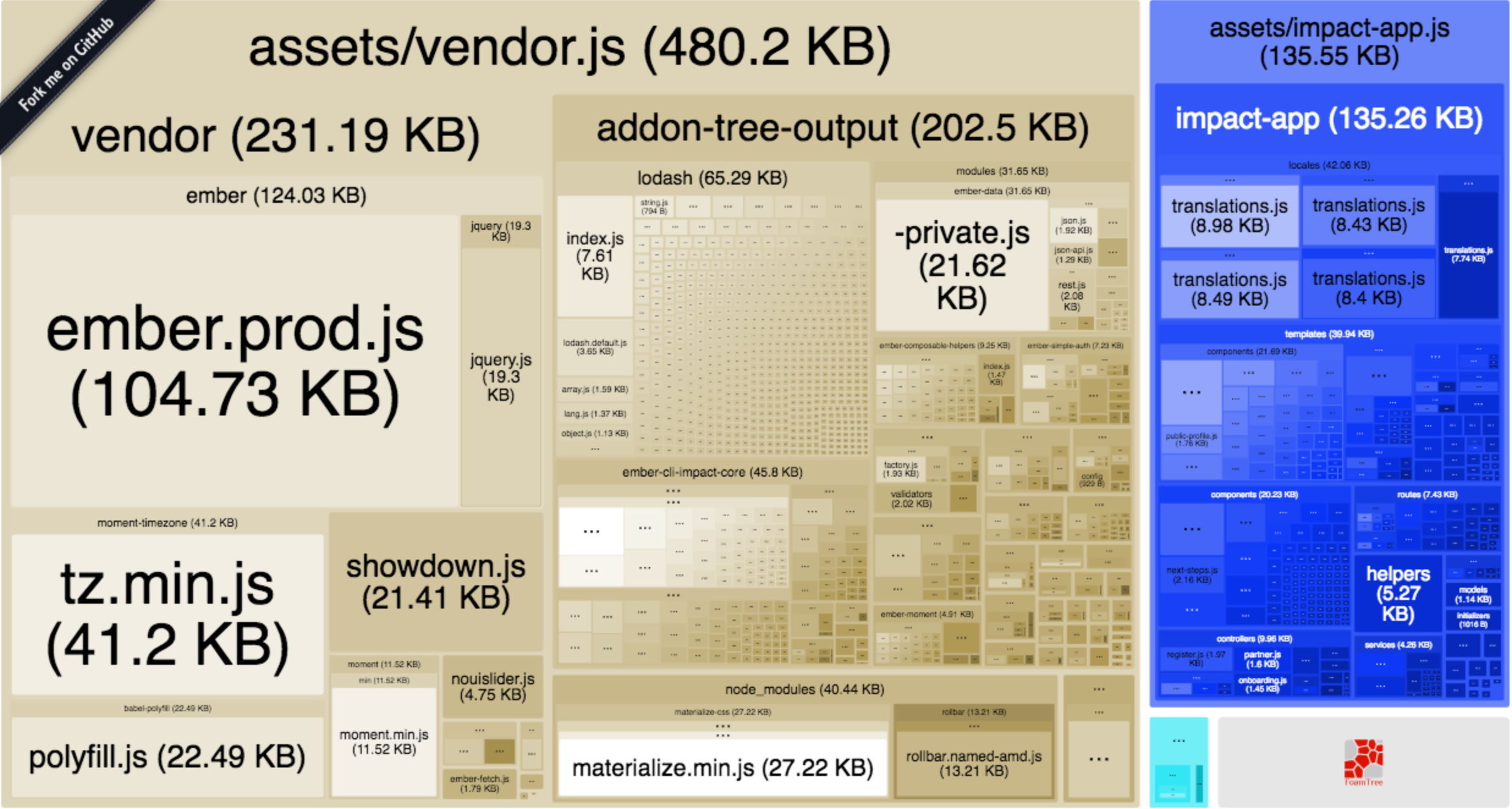Progressive Ember - Remove Liquid Fire
A walk through the real effort to transition an enterprise level Ember application to a progressive web application.
Part three: Removing liquid-fire
First
I love liquid-fire. I’m also really looking forward to Ed Faulkner’s next animaton toolkit for Ember, ember-animated.
There’s nothing wrong with liquid-fire, but I’m on a quest to reduce my vendor payload to improve application performance. My application really doesn’t do a lot of animation. The primary interaction that used animation was an expand/collapse animation. For 27 kB, I’m willing to part with it in order to reduce my vendor build size.
Pro Tip: Just because you can ember install something, doesn’t mean you need to. In my case, I don’t need 27 kB of JavaScript to achieve something that I can do for a few hundred bytes and some of my time.
Expand/collapse alternative
The main code we’re replacing is something like:
{{#liquid-spacer}}
{{#liquid-if showContent}}
some content
{{/liquid-if}}
{{/liquid-spacer}}When showContent is true, my containing element (liquid-spacer) will animate smoothly to fit my content. When showContent becomes false, my content will smoothly animate back to collapsed.
Animating from one height to the next is somewhat simple and can be achieved in several ways. Here is a way you could tackle this using window.requestAnimationFrame:
import { run } from '@ember/runloop';
animateHeight(selector, from, to) {
run(() => {
// this.element => assuming this is an Ember component
const element = this.element.querySelector(selector);
requestAnimationFrame(() => {
element.style.height = `${from}px`;
requestAnimationFrame(() => {
element.style.height = `${to}px`;
});
});
});
}
Simple. The real magic though, is when you don’t know the height. In my expand/collapse example, I know that I have a <div> that’s going to animate to some final state. Because I am conditionally displaying the content, that content isn’t in the DOM when the div is collapsed, so I don’t know what to animate to. If my content is static, I could give a rough approximation. For dynamic content, this is more challenging.
My general solution is to:
- let the user click the container to expand
- determine the container’s height at that time - something like:
this.element.querySelector('.some-selector').offsetHeight
- toggle the attribute to make your dynamic content render to the DOM
- determine the container’s height again
- now you know the start height and the final height, you can animate between the two states
In practice, this might look something like:
import { task, waitForQueue } from 'ember-concurrency';
import { get, set } from '@ember/object';
animate: task(function*() {
// compute initial height
const initialHeight = this.getElementHeight();
// toggle the content in the DOM - show/hide
set(this, 'showContent', !get(this, 'showContent'));
// wait for the Ember run loop
yield waitForQueue('afterRender');
// compute the final height
const finalHeight = this.getElementHeight();
// perform the animation
this.animateHeight(initialHeight, finalHeight);
})
You will also need some basic CSS to make this work:
.your-element {
overflow: hidden;
transition: height 0.4s ease-out;
height: auto;
}
Results
My vendor build before:

After refactoring my animation, removing liquid-fire and velocity-animate from my vendor build:

27 kB removed! Up next, lets optimize our web font loading.